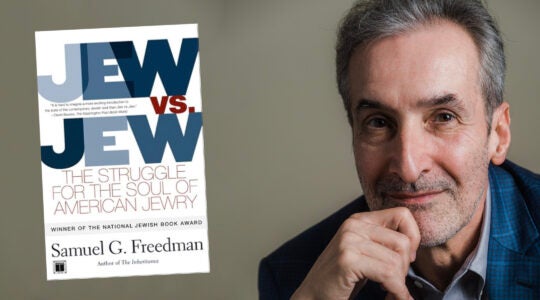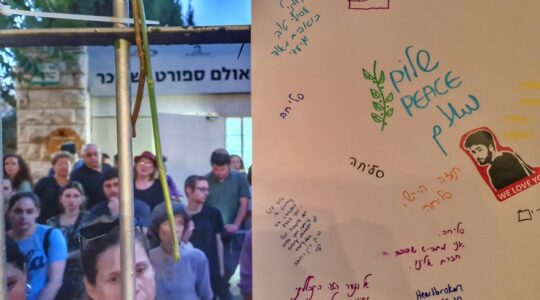On Jan. 15, the people of southern Sudan completed a weeklong vote that will likely break Sudan, Africa’s largest country, in two. Why?
For decades, the southerners — mostly Christian and tribalist — have historically been oppressed by the Arab/Muslim north. The rise of Islamic fundamentalism brought things to a head as rulers in Khartoum sought to impose Islamic law on the entire nation. The south rebelled; decades of war ensued. Slavery was used by the Khartoum regime as a weapon of terror. Arab militias, armed by the government, stormed African villages, killed the men and enslaved the women and children. Over the decades, three million Africans were killed, and tens if not hundreds of thousands were enslaved.
It was the reporting about the slaves — not media coverage of a vast slaughter — that awoke American interest in Sudan. In 1994, The New York Times published our column on modern-day slavery in North Africa. The response was such that we, the American Anti-Slavery Group — a coalition of Jews, Christians and Muslims — were able to organize a modern-day abolitionist movement based on an unlikely left/right coalition. Pat Robertson joined Barney Frank, members of the Congressional Black Caucus and white Republican senators in demanding an end to slavery in Sudan. After years of media coverage, grass roots activism in churches, synagogues and schools, and testimony to Congress, President George W. Bush forced both sides into a peace treaty in 2005 that ended the north/south conflict and provided for a referendum six years later.
On Jan. 6, I flew to South Sudan to witness the referendum. I also went to document the liberation of almost 400 slaves. The Bush peace initiative provided no mechanism for the return of tens of thousands in bondage in the north. I went with my abolitionist partners, John Eibner and Gunnar Wiebalk of Christian Solidarity International (CSI), who had traveled to Sudan over 100 times. Our first stop was two polling places, where we interviewed dozens of voters. All were for partition from the Arab north. “They stole our women and children and our cattle. They murdered us or made us slaves,” we heard. Then we went to liberate slaves.
Years ago, CSI had discovered an indigenous slave-returning initiative based on an agreement between Dinka tribesmen and Arab cattle herders: In exchange for the right to graze their cattle on Dinka wetlands, local Arabs sent retrievers north to find and return Dinka slaves. CSI amplifies this program, incentivizing more retrievals by providing the Arab retrievers with a hard to acquire cow vaccine. The returning slaves proceed to their villages of origin under the supervision of local chiefs. This process has facilitated the freedom of tens of thousands. But CSI and the American Anti-Slavery Group are committed to emancipate all those remaining.
I witnessed two slave liberations. In each, as we approached, we saw about 200 people sitting under a huge shade tree. CSI photographed all of them and give them food. I interviewed several on camera, with Dinka translators.
Their accounts were crushing. Girls and women were raped, boys as well. All were beaten, and many forcibly converted to a religion not their own. Much about their treatment could not be published in a family newspaper. We will be posting video interviews on www.iabolish.org. Here is a sampling:
n Awein, 25, was abducted from her Dinka village when she was 5, along with her 3-year-old brother. Taken north, and given to an Arab master, she was made to work — washing clothes, fetching water. She was continually raped by her master’s three brothers. She was beaten with sticks and when she failed to get every stain out of his clothes, the master cut her leg with a machete, leaving a horrible wound;
n Achol Yum Deng, genitally cut (with a razor blade) to make her a “clean Muslim woman,” lost the sight of her left eye when she was beaten after refusing to pray. She saw two of her children beaten to death;
n A light-skinned young boy with a painfully infected tooth, whose Arab master and presumed father killed his Dinka mother. The boy speaks only Arabic. The father/master let him go as he was not sure of his paternity.
n A tall Dinka man who, when he was young, along with three other Dinka boys, lost some of their masters’ cows. The other three were shot dead. He cried. They told him not to cry. He could not stop. They gouged out one of his eyes.
These stories correspond to hundreds of such accounts by returning slaves over the years, many documented by mainstream journalists.
I was fortunate. Back in Juba, we met with the man who will be president of South Sudan, Salva Kiir, and I presented him with a copy of the original 1994 Times column on slavery in Sudan.
It is extremely gratifying to see that the south will likely be emancipated. It was an added pleasure to hear that many there admired Israel, as the “first to defeat Arab armies” in the region. When told I was a Jew, a Balanda tribesman smiled widely and hugged me: “Welcome, you are one of God’s Chosen!” Who knew? All to the good, but now it is time for people of goodwill to join us in demanding that those still in bondage be set free.
Charles Jacobs is president of the American Anti-Slavery Group (www.iabolish.org).
The New York Jewish Week brings you the stories behind the headlines, keeping you connected to Jewish life in New York. Help sustain the reporting you trust by donating today.




